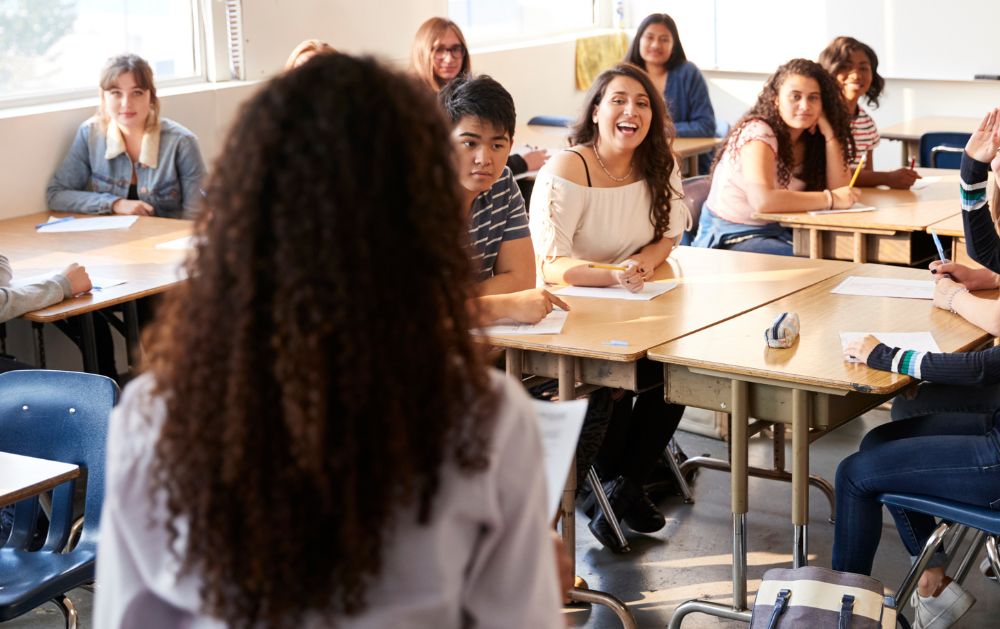What is the current state of educator and school leader wellbeing?
 Maslow’s hierarchy of needs is a motivational theory in psychology comprising a five-tier model of human needs. From the bottom of the hierarchy upwards, the needs are: physiological (food and clothing), safety (job security), love and belonging needs (friendship), esteem and self-actualisation.
Maslow’s hierarchy of needs is a motivational theory in psychology comprising a five-tier model of human needs. From the bottom of the hierarchy upwards, the needs are: physiological (food and clothing), safety (job security), love and belonging needs (friendship), esteem and self-actualisation.
Whether we realise it or not, the pandemic has impacted on how our basic human needs are being met. Wellbeing has become a priority in our schools (FISO 2.0) reflecting the stronger and more explicit focus on wellbeing and learning.
According to this article via AdaptiveX, “Almost overnight, many students went from a normal school day with teachers, friends, hallway chatter, and lunchroom fun to sitting at a computer alone for hours, sometimes six to seven hours...students have to be cared for in order for them to learn most effectively. Pouring into a broken vessel is futile.”
In this piece, we reflect on a recent spotlight article published in March by AITSL to help support student and educators' wellbeing.
Why is wellbeing important?
“Wellbeing is defined as a sense of health and vitality that arises from your thoughts, emotions, actions, and experiences. When we have wellbeing, we feel happy, healthy, socially connected, and purposeful most of the time” (Davis, 2022).
- This is a complex interplay - not one easy fix.
- It’s on the curriculum > The Australian Curriculum’s General Capabilities Personal and Social Capability strand sets out skills in four areas: self-awareness, self-management, social awareness, and social management (relationship skills) (Australian Curriculum, Assessment and Reporting Authority (ACARA, 2018).
- The prevention of depression, suicide, self-harm, antisocial behaviour (including bullying and violence) and substance abuse (Australian Catholic University 2008, p. 4).
- Statistics from 2013-2014 Young Minds Matter Survey of teens aged 12 -17 – around 14% experienced a mental disorder (anxiety being most common) and around 1 in 10 reported having deliberately injuring themselves (AIHW, 2021)
- Particular times require more wellbeing focus – COVID, starting school, transitions, trauma/grief
What might happen from a whole school perspective to support wellbeing?
“Ideally, wellbeing programs and practices will be part of a systemic whole-school approach, and where possible include wellbeing training for educators, support for parents, and student-focused interventions and resources.”
- Fostering all students to be ‘confident and creative individuals’ irrelevant of academic success
- Refer to The Australian Professional Standards for Teachers and the Australian Professional Standard for Principals and the Leadership Profiles (the Principal Standard) which explicitly outline the responsibility educators have to support learner wellbeing.
- A smooth transition from Primary to Secondary by ensuring our students have had the opportunities to maximise their learning outcomes.
- Look after our educators! Connection with colleagues is as important to educators as school connectedness is for student wellbeing.
- Learner wellbeing supported and strengthened by educator wellbeing
- Incorporating regular physical activity and connection to the outdoors into school routine reduces stress, anxiety and depression while increasing cognitive function, concentration and self-confidence (Bailie, 2021)
- Shared responsibility and a whole-school approach (although schools are in best position to identify and action student wellbeing)
- Report on progress against wellbeing outcomes (perhaps this should be highlighted on a report rather than an A-E grade for an assessment task? If we build confidence and self-worth, academic outcomes will improve). Just using simple techniques like an emoji card or wellness scale on the board/wall in the classroom for students to plot where they are feeling for each day/lesson would help to track.
- Education around the use of technology. The use of social media would have been the one thing to ‘save’ so many students during the periods of isolation and remote learning.
- Schools may need to reconsider timetabling changes to provide quality time for pastoral care, one-to-one mentoring, dedicated outdoor space and time in natural environments, and provision of extracurricular activities, all of which play a role in promoting wellbeing. (Merga 2020, pp. 660–67)
What programs are available to support wellbeing?
“Interventions that address teacher stress and burnout have been found to decrease stress, improve wellbeing, and result in increased commitment to their role among participating educators.” (Carroll et al. 2021, pp. 1-12)
- Teacher training – essential to equip teachers with knowledge and confidence to assist each other and students with issues (this will be essential for the rollout of the consent curriculum)
- Link programs to needs of students and school community – complex, no one-size-fits-all model (a common denominator in all mental health and wellbeing however, is physical activity)
- Here's a list of supports:
We encourage you all to read and share the full article with your colleagues and school network.
If you need support at this time, please don't hesitate to get in touch with us. We're here to help!